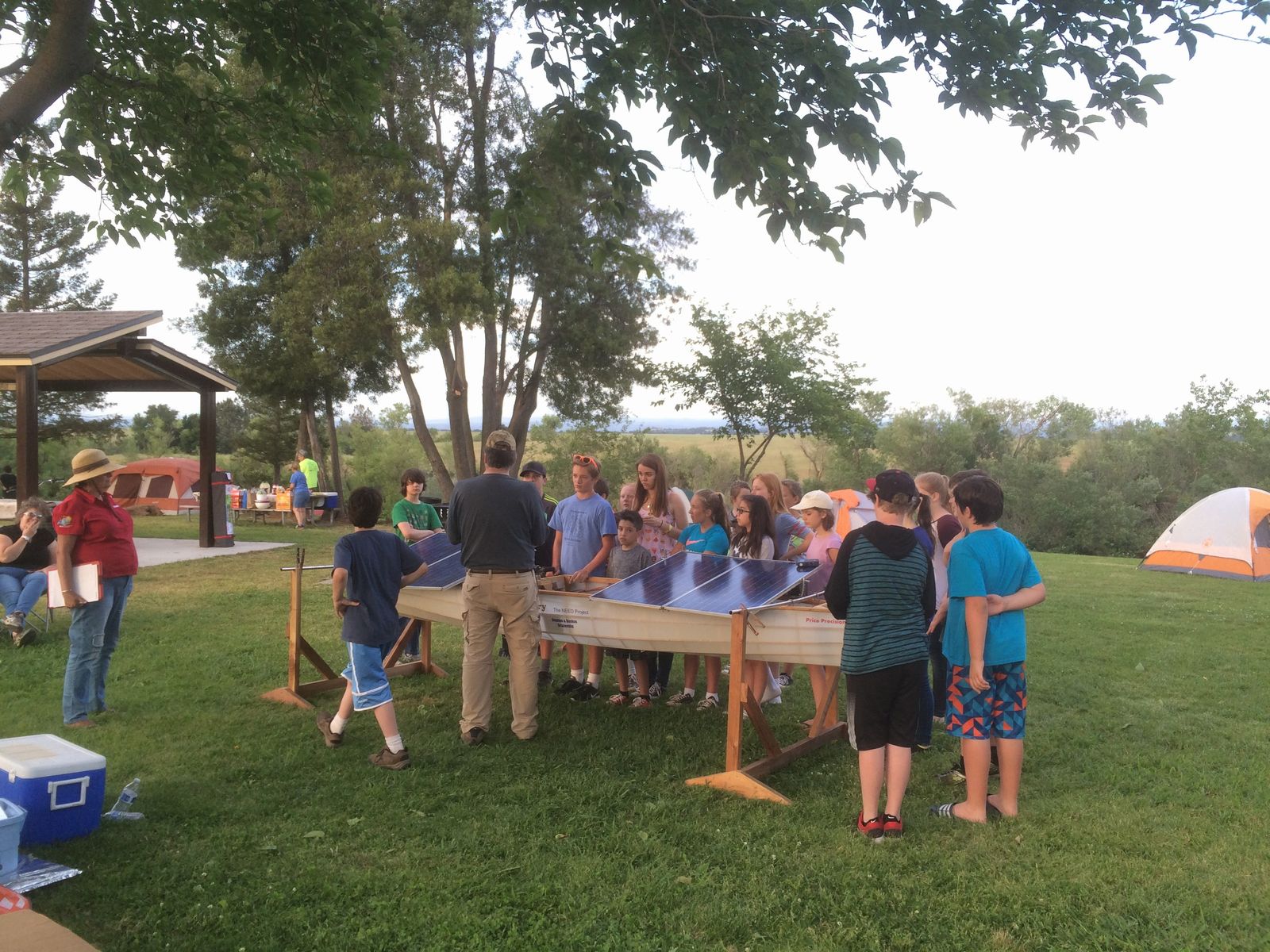As we all gear up for the 2017-2018 school year, the acronyms CCS, CCSS, NGSS, STEM, and STEAM are likely very common in conversations. The California Solar Regatta, sponsored by SMUD (The Sacramento Metropolitan Utility District), covered all of the above acronyms, plus one that is often missing – student engagement. For the past 6 years of the race, the Evergreen 6 program of Paradise Intermediate School in Paradise, California has participated in the Regatta. We are a group of 6th through 8th graders that have volunteered to not only build and pilot a solar powered boat, but to add several more aspects including: paperwork, fundraising, making t-shirts, presentation, video, logistics, engineers (to talk with the judges), wiring, props, and battery groups.
I have been teaching sixth grade for more than twenty years, and I have never seen students more excited and engaged about a school event than the Regatta. We have had years plagued with breakdowns, seasons where we could only practice in our local pool due to drought, as well as a few very successful years competing. This year was our most successful year of racing. However, the team was practicing the weekend before in Lake Oroville when our main switch melted and we were dead in the water. One last minute switch upgrade, and we were all anxious to see if it would work on race day!

As much as the students were engaged, this project had the same effect on our parents, volunteers, and local individual and business sponsors. Some sponsored time, others money, and some donated goods and services our school couldn’t support, like welding aluminum and machining. Every decision about what to do with the boat was discussed, pros and cons were weighed, and students voted on what to do next. There were several times when I wanted to do something as a teacher, but it was not what students voted to do.

Since we were part of this project for six years, you can imagine our last boat was better than our first. Weight was a major focus over the years. Our final boat with its battery (one of the three races is battery powered) weighed less than our battery alone from the first year. Lithium batteries replaced lead-acid batteries. A stick and dacron covered boat, built from scratch (from a very modified set of plans), replaced a donated square-stern canoe that weighed more than 100 pounds! Our first year, we were traveling less than 2 miles per hour. This year, we traveled nearly four times that speed!

Check out a video of our final sprint race using solar power alone:
Here is a video we made to “check in” – required by all teams a few months before the race:
This year’s race information and rules packet is available here:
https://www.smud.org/en/about-smud/environment/renewable-energy/solar-regatta.htm
I cannot thank the students, parents, sponsors, and SMUD enough for these past 6 years. If you look at SMUD’s website, you will see that this is just one of many public outreach events that they do, with several involving local schools. If you do not live in California, encourage your utility to offer something like one of SMUD’s events! And, if you live near water, this may be a great challenge for students even if your utility can not support an effort like this.

Again, this was the most exciting and hands-on opportunity in which I have ever been a part. Students years later will come back and rave about what they learned on the solar boat team. This year we are scaling back. Our plans are to use what we have learned with the solar boat project and build a solar powered go cart.
As the school year begins, I challenge every teacher to find their “solar boat.” If that means registering for the race and building a boat, great; However, it could be anything. Your “solar boat” might be a Lego Challenge, the KidWind Challenge, or trying a new NEED unit available for you to download for free! Have a great year!
